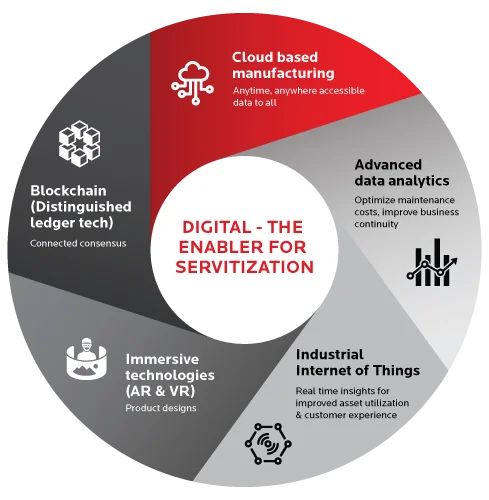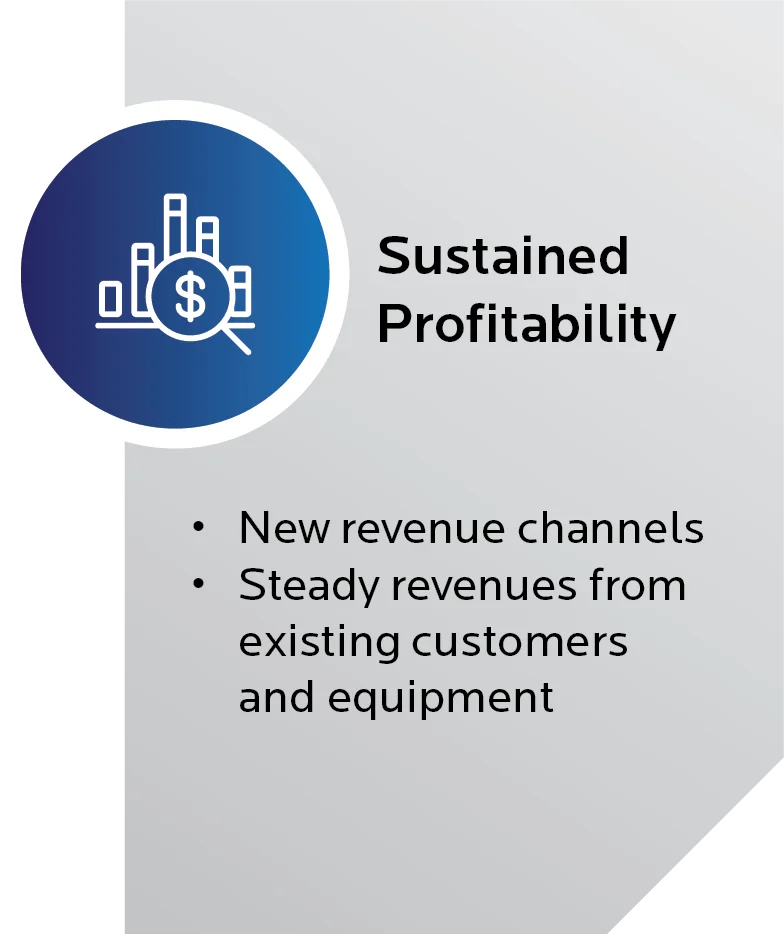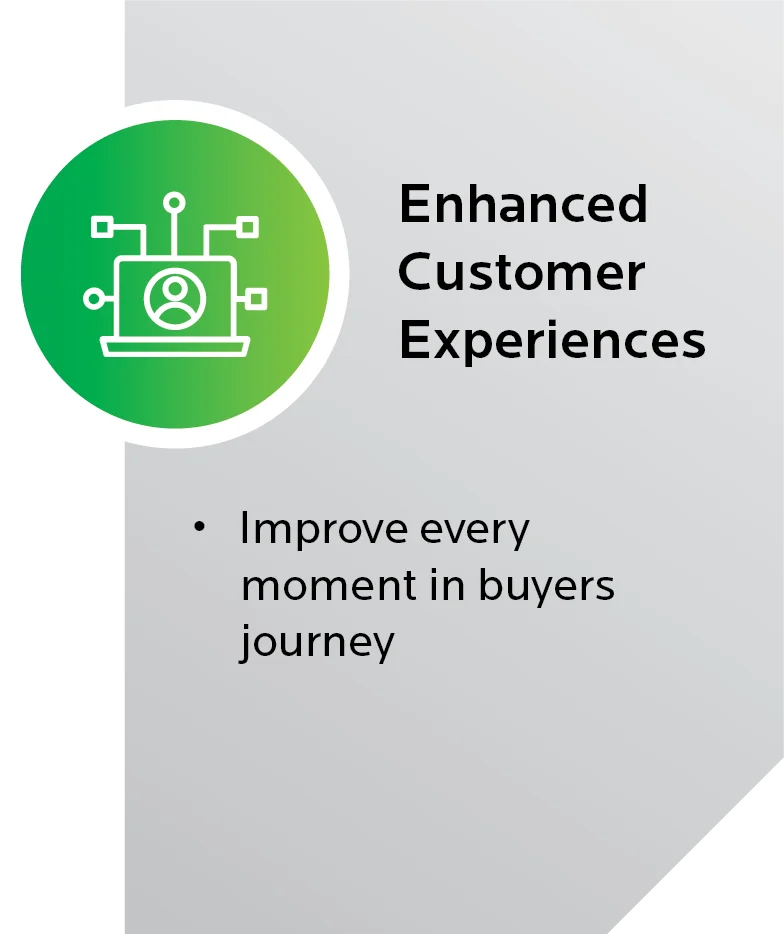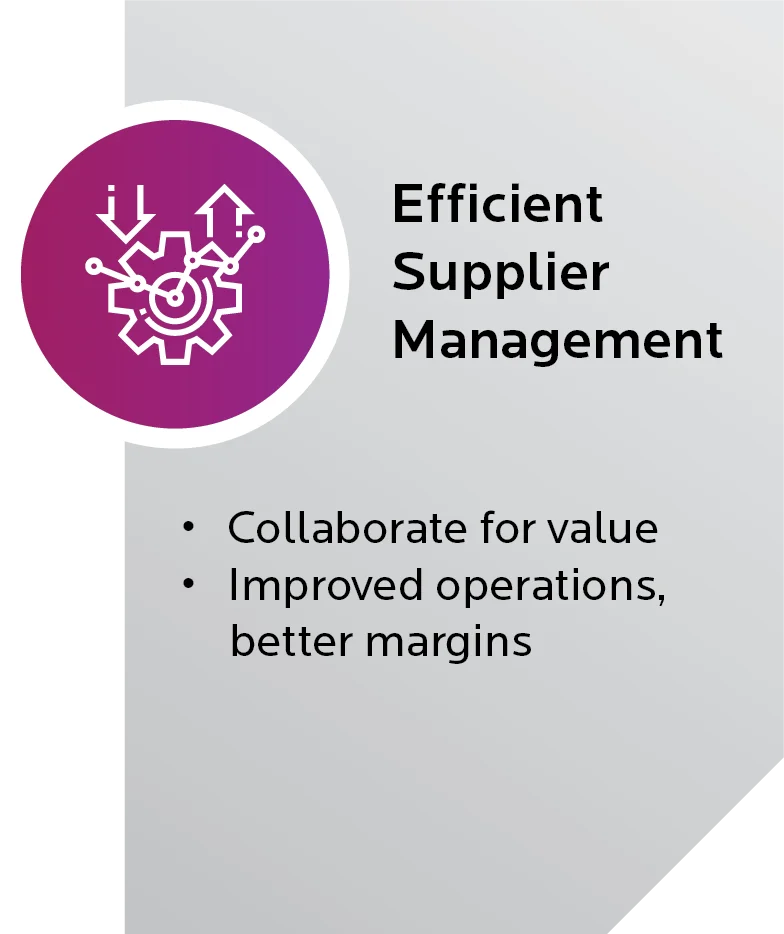How is servitization reshaping the future of manufacturing: An executive’s guide
Slowly but surely, the manufacturing industry has been moving away from product-based differentiation towards service-driven value add. A 2019 Forrester study found that service-led and outcome-driven business models are now a top priority for 85% of firms in the industrial sector. This trend is encapsulated in the term “servitization”, the process of improving customer experiences through the deployment of innovative and monetizable service offerings.
Servitization is a promising means to unlock new revenue channels for a competitive manufacturing environment. It is interesting to note that 70% of manufacturers who appeared in the Fortune 1000 ten years back have since lost relevance. And the ones that continue to survive and thrive have pivoted towards servitization.
Nearly every leading manufacturer in the world has a clearly defined servitization portfolio. Construction manufacturing company, Caterpillar Inc., has made major strides in this space, with innovative offerings such as the Cat Product Link. It lets customers obtain real-time updates on equipment location and maintenance needs, enabling rapid service delivery. Customers can gain from reduced equipment downtimes, while manufacturers can monetize repair and maintenance services at regular intervals. And last year, Daikin Applied UK reported achieving better visibility and optimized efforts by switching to digitally-enabled aftersales services.
"So, what has led to this recent rise of servitization across manufacturing companies? Why are enterprises now looking at a “more than just products” market positioning, despite years of legacy operations? On the one hand, the answer has to do with a highly competitive product landscape, where incumbents and disruptors alike are at the cusp of innovative product design and manufacturing. On the other hand, advancements in cutting-edge technology have made it possible to meet customer expectations like never before.
Digital as a Key Enabler for Servitization
At its core, servitization is enabled by five technology drivers, all of which bring immense transformative potential for manufacturing operations. These drivers aren’t limited to specific domains or verticals -- their ubiquitous impact has enabled a smart, connected manufacturing ecosystem where on-time data can be leveraged to deliver highly relevant services. The five technologies include:
- Cloud-based manufacturing - The cloud is quickly becoming the standard hosting environment for industries across the globe -- and this has special import for manufacturing. Data that was once housed on-premises can now be migrated to the cloud, paying only for the resources used, and scaling up/down as per demand. How does this help the cause of servitization? The cloud makes manufacturing data accessible to stakeholders across the enterprise, without any locational or technical restrictions. As a result, users can conduct analysis and find new opportunities to offer services in their own domain, owing to the “anytime, anywhere” nature of the cloud.
- Advanced data analytics - Data analytics is key to the servitization trend, automating the analysis of historical datasets to find areas of value add. For instance, analytics can reveal equipment maintenance patterns and help manufacturers to introduce predictive maintenance services. One of our customers, a textile manufacturer, was able to feed real-time data from 2000+ sensors into a machine learning-based predictive analytics model. As a result, asset downtime was cut by 48%, improving business continuity and optimizing maintenance costs.
- Industrial IoT (IIoT) - IIoT connects operational technology such as vehicles, manufacturing equipment, monitoring tools, etc., to the larger enterprise IT framework. By applying a layer of connectivity, IIoT data feeds into the analytics engine to unearth relevant, real-time insights. A multinational cycling product manufacturer and distributer used our IIoT solution to detect service requirements in real time – this helped to automate processes, and reduce the risk of missing reorder opportunities. Clearly, IIoT is integral to the servitization process, letting manufacturers continually monitor the customer’s surroundings for new value-adding opportunities. This can be linked to mobile applications ensuring adequate mobility for manufacturing stakeholders and flexibility on the end-customer’s side.
- Immersive technology (AR & VR) - Another game-changing driver for manufacturing is the ability to create immersive experiences. Augmented reality superimposes digital assets onto the physical world, allowing users to visualize the many product variants possible -- without actually investing in development. One can imagine use cases in product design, where manufacturers can simulate the innovation before starting production. It is also possible to offer mass customization services where customers can visualize and order tailored products, with the customization itself being the monetizable offering.
- Distributed ledger technology - Distributed ledger technology that’s now widely accessible in the form of Blockchain is also revolutionizing the servitization trend. Processes that were once highly complex such as approving an order, validating warranties, settling bills and invoices, and curbing risk are made far simpler via Blockchain. Blockchain aids servitization by streamlining decision-making processes through the “connected consensus” enabled by the distributed ledger technology. Consequently, customers can enjoy fast, secure, and fraud-free processes in critical areas such as warranty management.

Three Compelling Benefits of Servitization
Servitization isn’t just about adding to the coffers; it unlocks a viable way to stand out in a fiercely competitive market, without having to spend on high-risk product ideas. In other words, product innovation is always an uncertain endeavor and takes a certain amount of time to start showing value. Servitization, on the other hand, takes the data that’s already available and fulfills requirements that already exist. Broadly, this leads to the following benefits:
- Sustained profitability - Apart from adding new revenue channels, servitization can help manufacturers weather the storm during low-profit periods. It brings in steady revenues from existing customers and equipment, leaving the enterprise free to innovate and experiment with disruptive products.
- Enhanced customer experiences - An experiential uptick is a direct objective of any servitization project, aiming to add value at every step of the customer journey. From additional customization in the design phase to streamlined maintenance during after-sales, the customer experience witnesses a massive overhaul thanks to servitization.
- Efficient vendor relationships - Servitization creates a connected landscape where every stakeholder on the manufacturing value chain (OEMs, suppliers, logistics managers, design teams, etc.) can easily collaborate to create value. Technologies such as Blockchain and the Cloud make this simpler, by removing legacy complexities in protocol and access. Better vendor relationships translate into more time & cost-efficient manufacturing operations, significantly improving the bottom line.



You Can’t Avoid Servitization in Today’s Experience Economy
At the end of the day, servitization is all about converting a differentiated end-customer experience into a competitive advantage. Manufacturers no longer treat experiences as a nice-to-have, only a complement to the core product. Instead, the customer experience bolstered by new service offerings becomes the “product” -- monetizable and geared for customer loyalty.
Manufacturers looking to implement servitization must focus on aftersales for existing products, product-as-a-service models (e.g., renting out equipment instead of selling it) and advanced services such as pay-per-use contracts enabled via Blockchain. This will not only cement market leadership for incumbent manufacturers, resilient against changing tides, but it will also position manufacturers as “experience builders” where technology, products, and customer expectations intersect for sustained profitability.